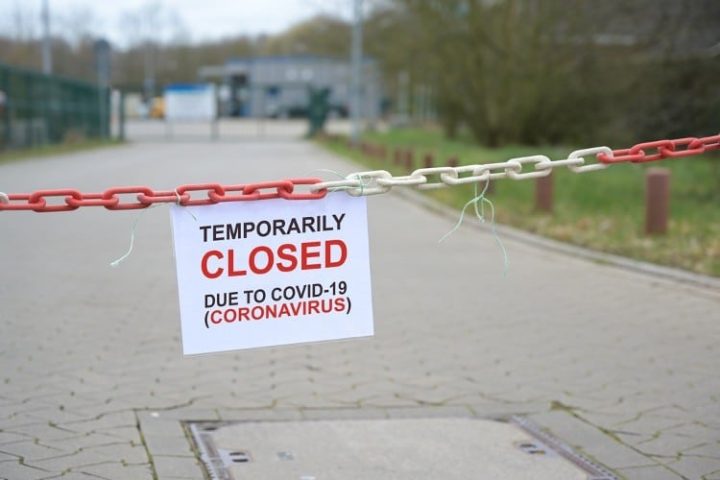
As the country enters its third year of the Covid pandemic and states and localities continue to impose and reimpose restrictive policies and mandates, a new comprehensive study found that such measures harmed the economy and education while failing to achieve their stated goal of preventing Covid deaths.
The study, released on Monday by the National Bureau of Economic Research and the Committee to Unleash Prosperity, measured states’ performance on three key metrics, including the economy, education, and mortality, and categorized them depending on the outcomes.
The report reads,
Almost exactly two years ago COVID-19 spread to the United States. Following the federalism model, the 50 states and their governors and legislators made many of their own pandemic policy choices to mitigate the damage from the virus. States learned from one another over time about what policies worked most and least effectively in terms of containing the virus while minimizing the negative effects of lockdown strategies on businesses and children.
The following graph shows the combined scores for every state:
CTUP Graph 1Contrary to the official narrative, but predictable to anyone who paid attention to alternative sources, the states with better outcomes were not those with draconian mandates and restrictions, rather than those that allowed more freedoms and encouraged people to make their own health choices.
The states that performed the worst and received an “F-” or “F” score were New Jersey, Washington, D.C., New York, New Mexico, California, and Illinois. All of these states are governed by Democrats and have imposed some of the harshest Covid restrictions in the nation.
Maryland, Nevada, Connecticut, Pennsylvania, Massachusetts, Michigan, Hawaii, Delaware, Arizona, Virginia, Colorado, Oklahoma, Alaska, Ohio, and Wisconsin performed a bit better, but still unsatisfactorily. Those predominantly Democrat-run states got a “D” score from the researchers.
The next category of states, receiving a “C” score, included Oregon, Louisiana, Kentucky, Rhode Island, Minnesota, Texas, Tennessee, Mississippi, Washington, Wyoming, Alabama, and Georgia.
The “B” grade was given to Republican-dominated Indiana, Kansas, Missouri, West Virginia, North Dakota, North Carolina, South Carolina, Iowa, and Idaho, which remained largely open and saw little to no restrictions.
Finally, the researchers recognized Arkansas, Maine, New Hampshire, Florida, South Dakota, Montana, Vermont, Nebraska, and Utah, as the leaders in all three categories, receiving an “A”.
“The scores have a clear spatial pattern, perhaps reflecting spatial correlations in demographic, economic, and political variables,” observed the economists.
The paper explained that when evaluating the economic performance of the state during the pandemic, the research factored in unemployment rate from April 2020 to December 2021 and the state’s GDP.
Commenting on the findings, the researchers said,
The states that locked down their economies have had unemployment rates on average about two percentage points higher than states that did not engage in severe lockdowns. These high state unemployment rates have persisted for two years now. Most lockdown states have still not fully recovered the jobs lost in the early months of Covid.
As for the school closures, the paper stated that the measure “may ultimately prove to be the most costly policy decision of the pandemic era in both economic and mortality terms.”
The paper quoted studies that found that school closures at the end of the 2019-2020 school year were associated with 13.8 million years of life lost, as well as the Organization for Economic Co-operation and Development’s estimates that learning losses from pandemic school closures could cause a three-percent decline in lifetime earnings, among other negative outcomes.
“Unlike mortality or economic outcomes, closing public schools was entirely under the control of policymakers,” argued the economists.
The explanation of the mortality metrics noted that there “is no clear pattern in which states had high and low mortality, although we note one major study from Rand Corporation researchers found that lockdowns increased all-cause mortality to a statistically significant extent.”
It continued,
Whether or not political leaders can be considered responsible for mortality outcomes is therefore unclear, although advocates of a “focused protection” strategy have suggested that sheltering the high-risk could reduce overall mortality — an approach adopted by Florida.
The research factored in both Covid-related and all-cause mortality rates. It is argued that the analysis of all-cause mortality is extremely important, since “It also captures … effects of lockdown policies, such as higher drug and alcohol deaths, and differences in underlying health by being measured relative to the baseline.” The researchers relied on the official USMortality.com data, which estimates are based on data from the U.S. Centers for Disease Control and Prevention (CDC).
“Pandemic mortality was higher in states where obesity, diabetes, and old age were more prevalent prior to the pandemic,” the authors noted.
“We hope the results of this study will persuade governors not to close schools and businesses the next time we have a new virus variant,” said Stephen Moore, a co-author of the study.
This is not the first major study that found that Covid restrictions were ineffective and harmful.
In mid-February 2022, John Hopkins University published a paper titled “A Literature Review and Meta-Analysis of the Effects of Lockdowns on COVID-19 Mortality.” The study found that closures of businesses, schools, and public places and stay-at-home orders that were imposed by governments worldwide did virtually nothing to curb the spread of Covid and save lives. Yet, these measures had a “devastating” and “enormous” effect on the economy, society, and public health, per the researchers.





